Fighting robot for war: draft outline
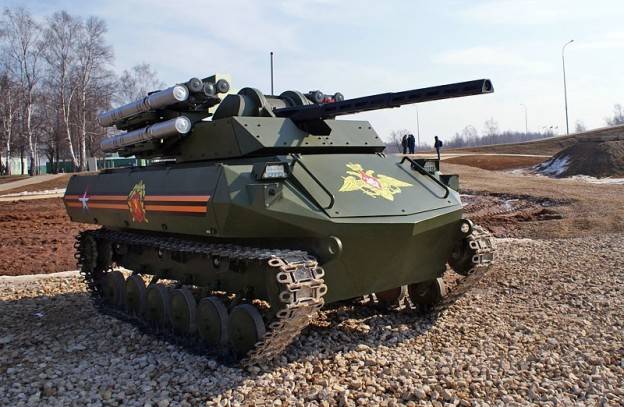
Modern combat developments robots, both domestic and foreign, you can criticize for a long time, they have enough shortcomings. The main thing, in my opinion, is that now these developments are being done to a greater extent for demonstration purposes, in order to demonstrate the very possibility of creating this type of machine. Indeed, many samples then travel for years from exhibition to exhibition. An exhibition sample is inevitably created in haste, sometimes in the hope of a future order, sometimes in order to show that our defense corporations are no worse than those of a likely adversary. That is why it is not thought out, has many vulnerabilities, and is well suited for combat operations, if partly.
Why not immediately think and create a model of a combat robot that immediately, without any reservations, will be suitable for war? The hastily baked exhibition samples to some extent disorient the command, which is compelled to choose from models obviously unsuitable for combat conditions, when the enemy will beat them out of everything that he has. Hence the well-known coldness of the army to the existing models of combat robots. Now, if there was such a sample, which at first glance would be a fighting machine, then, perhaps, with the order would not rust.
Since the situation in the world is clearly heating up, then, in my opinion, it is advisable to offer some sketches to the draft of the combat robot just for war.
Although I am most inclined towards automatic combat drums, capable of operating mostly autonomously, nevertheless, I think that the creation of a robot within the framework of the established concept of a machine for directly supporting infantry is quite reasonable. Within the framework of this concept, the combat robot found, with closer analysis, an unusually many goals and objectives.
It is better to put a piece of metal under fire
Since the basic requirements for a combat vehicle are determined by the likely tactics of its use, you need to carefully look at what the combat robot will do.
It is usually considered that the robot must be a mobile platform - carrier weapons (usually large-caliber machine guns, automatic grenade launchers, various kinds of guided missiles), the main task of which is to fire, supporting infantry, for example, in attack, in the assault on fortified positions. However, the existing types of robots are, firstly, weakly armed for such a purpose, and, secondly, they duplicate existing military equipment (for example, armored personnel carriers or infantry fighting vehicles, which have approximately the same set of weapons and the 30-mm automatic gun that robots have not). In addition, the tank with its gun is an incomparably more compelling argument in the fire support of the infantry than the "machine gun with a motor." One can hardly hope that relatively light combat robots will receive powerful artillery weapons and will be able to replace Tanks or self-propelled guns. A launcher for rockets can be installed on a robot, but this is already the path to an autonomous shock robot, since it is clear that such a robot will not be able to operate with infantry; with each shot, the infantry will be forced to scatter and take cover from a powerful jet of jet gases.
Dead end? Not really. For a small, armored and unmanned vehicle, there is an important tactical task, the accomplishment of which will help turn the tide of the battle. This task is to collect enemy fire, help to identify his firing points and partially, as far as the capabilities of the machine are sufficient, to suppress them. The rest is achieved by other fire means. Thus, the main tactical task of the infantry support combat robot is reconnaissance in combat.
There is no need to prove that any reconnaissance in force, for all its necessity, is a very unpleasant type of battle, with high risks and losses. For this task, the best fighters stand out, the losses of which are killed or wounded are very sensitive to any unit. It is better and more expedient to substitute a self-propelled piece of iron for people instead of people.
Hence, three basic requirements for a combat robot of this type. The first is compactness and good booking. The second is sufficient firepower. The third is a developed system of observation, reconnaissance and communication devices.
The height is just over a meter.
Armored vehicles are usually designed to put the crew in them. For example, the average booking capacity for a single crew member is 2,5 cube. meters. This leads to a large amount of armor, a rather large machine size, and a large area and thickness of armor make the armored car rather heavy.
Since there is no crew in the combat robot, its entire reserve capacity can be squeezed to the very minimum protecting the engine, fuel tanks and batteries, weapons, on-board computer, radio station, instruments. Of these, the weapons together with the ammunition will be installed mainly outside the body, electronic equipment and devices do not take up much space, so approximately 3 cube. it is quite enough meters of zabronevy volume to squeeze in it the diesel, a stock of fuel, accumulators and all other necessary equipment.
In accordance with these estimates, the size of the armored hull is quite compact: 3,5 meters in length, 0,8 meters in height and about 1 meters in width. When booking area in 17,7 square. meters and armor thickness in 30 mm, the weight of the armor is obtained 4,5 tons. Along with everything else, the total weight of the machine can be put in 7-7,5 tons. Booking, of course, does not necessarily make such a thick everywhere. It is possible to reduce the thickness of the reservation of the bottom and roof, as well as the stern sheet, but at the same time bring the thickness of the front sheet and side sheets (which will be fired most often) to 60-70 mm. Differentiated booking will make the combat robot a very tough nut to crack.
It is most expedient to make a robot with maximum use of parts and assemblies from existing combat equipment. Firstly, it will significantly simplify the production of combat vehicles. Secondly, it will simplify maintenance and especially repair of combat robots, which they will need very often. Therefore, in my assumptions I was guided by those nodes that are already used in military equipment.
The engine is, of course, diesel, for example, UTD-20С from BPM-2 or KAMAZ-7403 from BTR-80. These engines are quite compact in size, but at the same time they have a lot of power, which will make the combat robot, whose weight will be about half of the weight of the BTR-80, fast and mobile.
The running gear of the robot must, of course, be wheeled. The wheel suspension is simpler and more reliable than the tracks, the wheeled vehicle is more difficult to immobilize compared to the track, and the wheel is more stable when it explodes on a mine. The wheel with the suspension can also be taken from the BTR-80. In determining the size of the combat robot, I proceeded from the fact that its wheel formula would be 6х6, that is, three wheels for each board. Wheel diameter - 1115 mm, clearance 475 mm. With a height of an armored hull of the order of 800 mm, it will rise above the wheel just 160 mm - 16 centimeters, or so. Total from the ground to the roof about 130 cm in height.
The red lines mark the approximate dimensions of the armored combat robot in comparison with the BTR-80.
In such a low and flat machine, the enemy will be very difficult to get. A small target projection area in combination with a good reservation will make it invulnerable to large-caliber machine guns. Theoretically, a robot can be destroyed by shooting from an RPG, but it will take a very good shot to achieve hitting and hitting even a standing machine. In addition, the side, except for armor, also protected by wheels.
30-mm gun and lift combat module
In my opinion, a machine gun is too weak a weapon for a combat robot. It is best to focus on the 30-mm automatic gun 2А72 (it has the same ammunition for the gun 2А42, but the recoil when fired is smaller, and therefore it can be put on lightly armored cars). Guns of this type are relatively light and compact. The weight of the gun itself - 115 kg, weight of ammunition from 500 shots - 400 kg. For the Mi-28 helicopter a turret for the 2А42 cannon was developed, which can be taken as a basis for the turret of a combat robot cannon. The height of the turret is about 30 cm.
2A42 gun on aviation turrets. It is not at all necessary to make a large tower for it, as on Uranus-9.
This gun is surprisingly compact and lightweight. Just what you need to arm combat robots. In addition to the gun, I think it is advisable to add AGS-30, the weight of which is just 16 kg, and also 13,7 kg - a box for 30 shots.
The very compact size and relatively small weight of the gun and the grenade launcher make it possible to place them in one combat module, paired. This module is a very important part of the whole machine, on which all the combat capabilities of the robot depend. Since the height of the machine is small, it is advisable to make the module lifting. In this case, the robot has the opportunity to fire from shelters: trenches, walls, earthworks. The module is best done in the form of "glass" of armor steel, which rises up with a hydraulic drive. Inside the "glass" mounted rotary device and placed ammunition for the 30-mm gun. The gun itself and the grenade launcher paired with it on the rotary turret are mounted above the upper edge of the “glass” and protected by an armored guard (or a small turret). Thus, the "glass" is stationary, and the turret can be rotated, providing circular fire. An armored "glass" is needed so that in the raised state of the module, the shelling of the enemy could not hit the turret mechanisms and the ammunition. When folded, only the turret under the armor rises above the roof (its height can be approximately 30-40 cm, which gives the overall height of the vehicle along the top of the 160-170 combat module; see, but the smaller the better). In the raised position, the module can rise 70-80 cm, then the turret will be raised more than 2 meters above the ground.
It seems that such a set of weapons is quite sufficient for a combat robot, since it allows you to hit most of the targets that appear on the battlefield.
Surveillance and intelligence devices
Fighting robots are usually equipped with a fairly decent list of cameras and devices that are absolutely necessary for him to confidently control. However, installing cameras on the sides of such a low-height hull of a combat robot will result in the reconnaissance value of the robot being small, due to the very limited sector of the review. Requires additional equipment and appliances.
Optical equipment. In addition to the cameras intended for control, it would be advisable to add several more surveillance cameras. The first one is a circular camera installed in a hemisphere of bulletproof glass on the roof of the combat module (in addition to the cameras designed for aiming the gun and the grenade launcher installed inside the module).
A typical example of a circular camera review. Transparent sphere can be made of bulletproof glass.
The second - the camera is also a circular view, mounted on a telescopic telescopic bar, rising vertically. This kind of periscope is intended for cases when it is necessary to examine the terrain from a large viewing angle, or to glance unobtrusively from behind a cover or obstacle. The third is a front-view camera mounted on a telescopic bar that extends horizontally forward. In a city battle, such a camera will give an opportunity to glance behind the corner of a building without being noticed.
All cameras should capture the infrared range, which will allow to use them as the simplest thermal imagers. A full-fledged thermal imager is better to use in the set of aiming gun optics.
Sound equipment. Modern systems for processing acoustic signals have led to the creation of a compact and highly efficient set of equipment that makes it possible to detect firing points from the sound of shots. They are very simple, compact and versatile. This can be seen at least in the "Owl" system, which uses the intersection of the shock wave from a flying bullet. Acoustic measurement data processing allows you to accurately detect the location of a shot of any type of small arms with a caliber of up to 14,5 mm, and data processing takes no more than two seconds, and the number of simultaneously determined targets reaches ten.
A combat robot can have an automatic firing mode, when it fires high-explosive fragmentation projectiles of the enemy’s target with a sound system without the operator’s participation.
The value of a combat robot for reconnaissance and battle management is very high, and much more than you can imagine at first glance.
First, a combat robot with good surveillance devices can be considered as a mobile NP. The fact that he constantly broadcasts the video signal is not very good. But, since this is done, it is necessary to extract the maximum benefit from it. Through the cameras on the battlefield, not only the combat robot operator can look, but also the higher-level commanders (the control system of the robot must be able to be connected by the command). The opportunity to look directly at the battlefield from headquarters with your own eyes is a very valuable opportunity.
Secondly, for the accompanying infantry, these are also “eyes” and “ears”, as well as a mobile radio transmitter. Any combat robot has a fairly powerful radio station that provides its control, and then the combat robot can serve as a mobile communications center. To do this, on the aft side of the robot, you need to install a remote with a screen, camera controls and a handset to communicate with the operator (such as was put on American tanks, starting with at least M4 Sherman). After contacting the operator, the infantry can request a transfer to the aft camera control panel to see for themselves. This will be most effective in urban combat.
A frame in which you can clearly see how the fighter is talking to the crew of the M4 Sherman tanker on the telephone set at the stern of the tank. April 1945, the Battle of Okinawa.
Thirdly, a robot equipped with devices for detecting targets, determining one’s own position and measuring the azimuth and distance to targets can be an excellent artillery or air gunner. If the robot delivers the exact coordinates for firing mortars, self-propelled guns and aircraft, then heavy armament is not necessary for the destruction of, say, tanks or strong fortifications.
In my opinion, a combat robot of direct infantry support is not a “machine gun with a motor” at all, but rather a mobile observational, reconnaissance and corrective station, with the ability to independently hit some targets. Such a combat robot will indeed be very useful in combat operations.
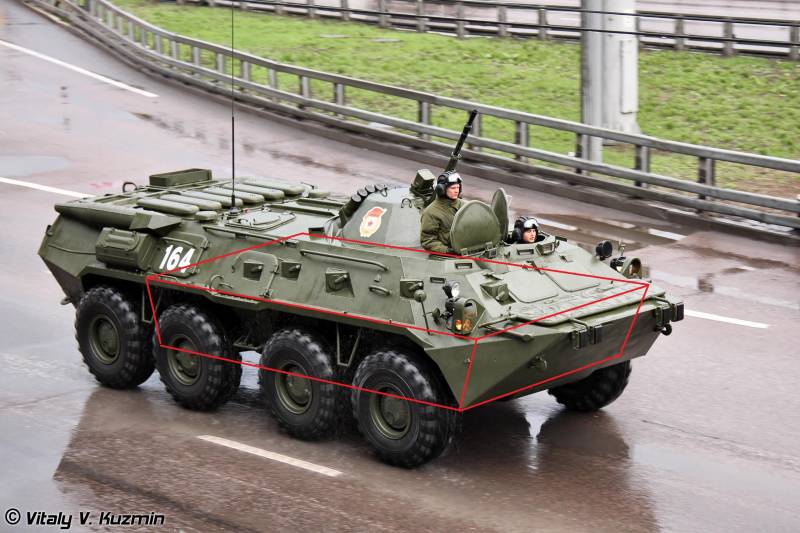
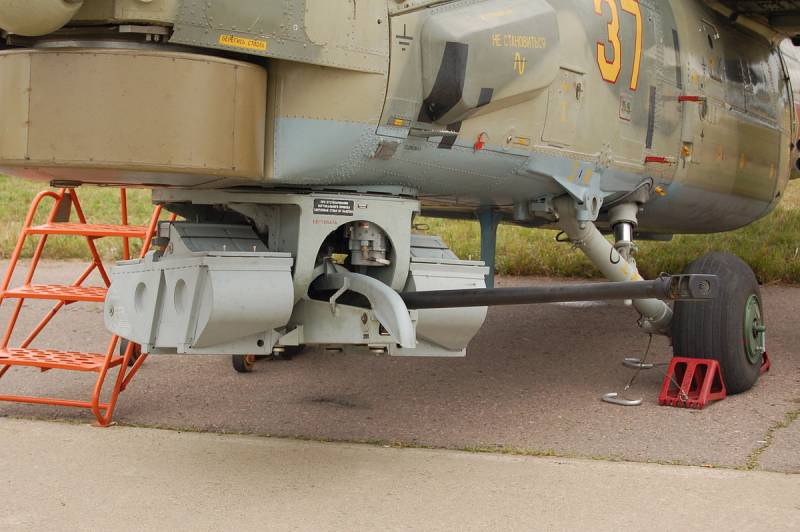
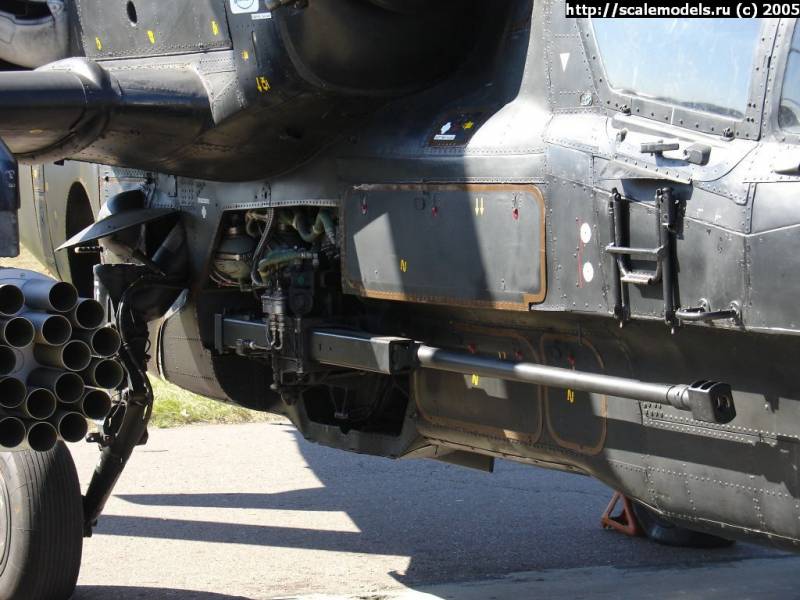
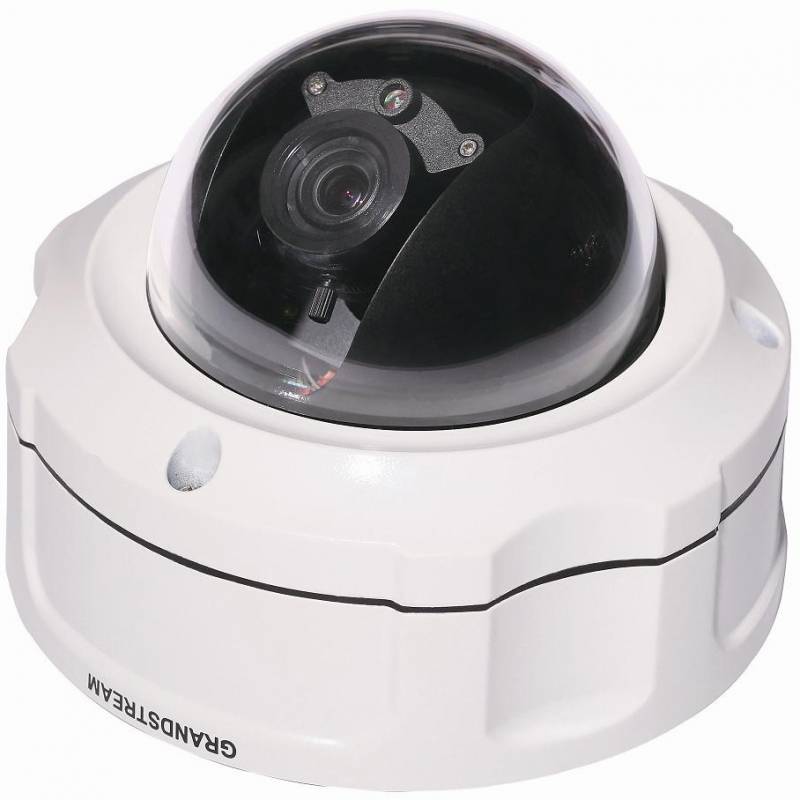
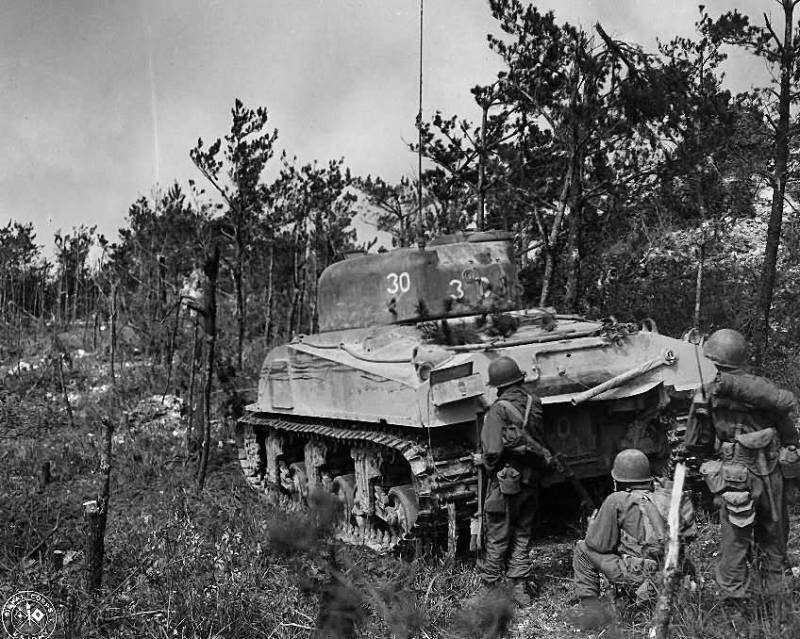
Information